Upgrade to Windows 10 and you will lose these 5 features
The Start screen isn't the only thing that's going away…
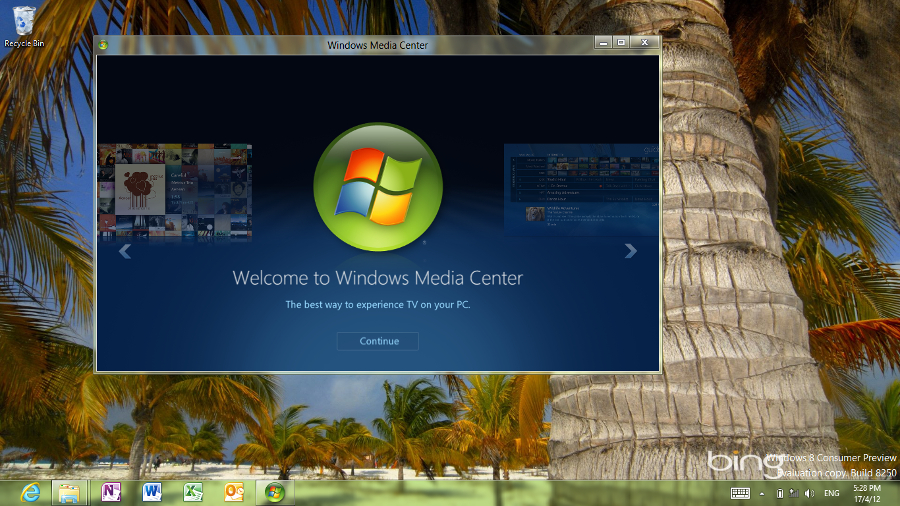
Introduction
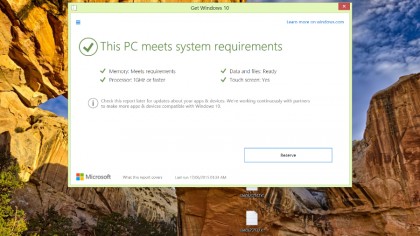
Usually, a new version of an operating system changes existing features and adds new ones, but sometimes the changes mean that old features aren't available any more. The full-screen Start screen of Windows 8.1 isn't the only casualty – and you can make the new Start menu bigger, although you can't bring back the full-screen list of installed apps, just the big view of pinned tiles.
Software and hardware compatibility is good with Windows 10; elderly applications should still work. As usual, you're going to need new versions of security and anti-virus software, and probably of most system-level tools (although handy utilities like ClipMate and WinDirStat continue to work without any problems).
The Windows 10 advert you'll have seen on your PC that lets you reserve your free upgrade also performs a compatibility check, so it will warn you of any software or peripherals that won't work with Windows 10. For example USB floppy drives will need a new driver (there's one on Windows Update that works with most models).
Read on to find out precisely which key features will be goners if you upgrade to Windows 10.
- Read more about Windows 10 migration on our sister website, ITProPortal.com
Updates and gadgets
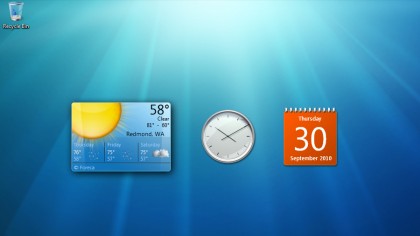
There are features that are part of Windows itself that won't be available after you upgrade to Windows 10. If you're getting Windows 10 Home, you lose the option to turn off Windows updates in Windows Update. That's a good thing because not installing updates makes you very vulnerable to malware and other attacks, but you'll have to get used to the restarts that come with updates. At least you can now schedule the times those happen.
Windows 7 desktop gadgets – which were actually a Windows XP feature – no longer work in Windows 10 and any you have set up will be uninstalled; they didn't work in Windows 8.1 either. Many of them are replaced by the live tiles of apps with similar features – pin those to the Start menu and if you just want a quick glimpse of information like the weather report, you can see it without opening the app.
Most games are gone
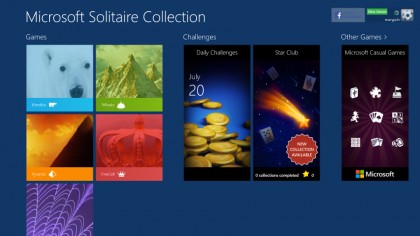
Just like Windows 8.1, Windows 10 removes some of the familiar Windows desktop games. Solitaire will return as a default install with the new OS, but Spider, FreeCell, Hearts and even Minesweeper will be uninstalled when you upgrade to Windows 10.
Are you a pro? Subscribe to our newsletter
Sign up to the TechRadar Pro newsletter to get all the top news, opinion, features and guidance your business needs to succeed!
That said, you can always grab the missing games from the Windows Store, complete with some nifty extra options like daily puzzles – but if you want to play those daily challenges, you have to either sit through 30 seconds of adverts for each game, or pay for the premium version. And because the apps have splash screens and options, it takes longer to get to the point where you're actually playing a game than it did with the plain old desktop versions.
Media Center: Finally gone for good
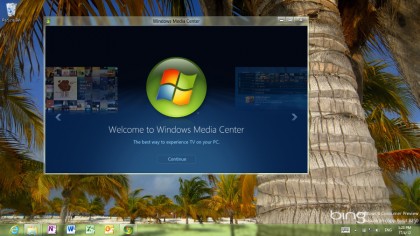
Media Center was an idea that never really took off – it was a way of watching TV with a TV tuner card on a big screen that didn't work with all satellite and cable services, with full screen apps that only a handful of entertainment services ever produced, that hadn't really been updated since Windows Vista. It was clearly headed for the chopping block.
Being able to stream from your PC to a special Media Center Extender box (or an Xbox 360) has been replaced by using Miracast, or Chromecast, or just by the TV features on Xbox One. It had a temporary reprieve for Windows 8, but Microsoft has confirmed that Media Center is gone for good. "Due to decreased usage, Windows Media Center will not be part of Windows 10," Microsoft's Brandon LeBlanc confirmed on the Windows blog. Whether you upgrade from Windows 7 or Windows 8, Media Center will be uninstalled when you switch to Windows 10.
But Media Center wasn't just useful for watching TV; it also let you watch DVDs. The Windows 10 specification says rather boldly that "watching DVDs requires separate playback software". That's not a problem for new PCs – if you buy a PC with a DVD drive, it will routinely come with DVD software like Cyberlink's PowerDVD. For people upgrading from a version of Windows 7 or 8 with Media Center, Microsoft has suggested that it will have a DVD player option available, but there are no details yet.
XP Mode is no more
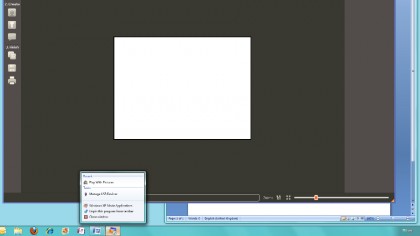
Windows 7 Professional, Enterprise and Ultimate included a tool called XP Mode for running older programs that couldn't run on Windows 7 – it was a copy of Windows Virtual PC and a copy of Windows XP packaged up to run in it. XP Mode wasn't included with Windows 8 and it's not part of Windows 10 either. It was intended to be a tool for businesses rather than home users, because Virtual PC wasn't particularly good at multimedia.
And after six years, with Windows XP no longer getting security updates or even anti-virus signatures for Windows Defender, and Virtual PC no longer available from Microsoft, it's not surprising XP mode isn't in Windows 10. If you have an XP program you can't do without, virtualisation software like Virtual Box will let you run it, but you're going to have security vulnerabilities.
Only one OneDrive
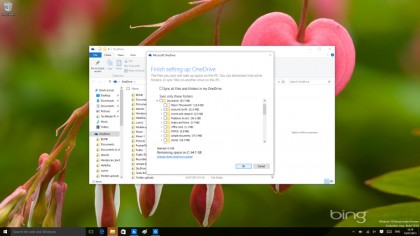
There have been several ways of using OneDrive with Windows over the years. For Windows 8 and 8.1 it's built in, but for Windows 7 you had to download Windows Live Essentials to get the OneDrive application. The new OneDrive client is built into Windows 10 and not only does it replace the version in Windows 8.1, it also removes and replaces the Windows Live Essentials version.
When you upgrade from Windows 8.1, you will have to tell OneDrive which folders and files you want to sync so you can see and use them offline. Any folders and files you don't sync won't be visible offline, unlike in Windows 8.1 where you could navigate the entire folder structure offline (so you could create new files in folders you hadn't synced), see filenames and image thumbnails offline, and even search for files – though you couldn't open them. Microsoft promises a way to do something similar in Windows 10, but not until later in the year.
- For a load of neat tips and tricks on Windows 10, buy: Windows 10 Beyond the Manual
Metro mode and immersive IE
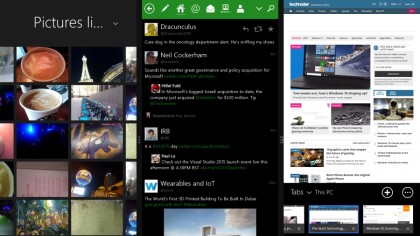
Although Windows Store apps still run in Windows 10 and you can still use IE if you want, you can't keep the Windows 8.1 versions of apps like Mail and Photos, which have been replaced by universal Store apps with different interfaces and different features. The 'immersive' touch-friendly version of IE is also gone – the new Edge browser replaces it, and although it's easier to use with touch than IE it doesn't have the same touch-first interface and it won't get features like showing you what tabs you have open on other devices until later in the year.
But what's really gone is the separate Metro mode, where Store apps opened in their own windows and you could only have three of them visible on-screen at once (or two plus the desktop). If you liked being able to separate apps neatly like that, and you liked being able to drag them into place with your finger, the new tablet mode is the closest you'll get – but to use it you have to lose the taskbar in favour of the simplified tablet mode taskbar with no pinned apps, and you only get two apps at once.
- You might also want to check out: Windows 10 features that will be missing on launch day
Mary (Twitter, Google+, website) started her career at Future Publishing, saw the AOL meltdown first hand the first time around when she ran the AOL UK computing channel, and she's been a freelance tech writer for over a decade. She's used every version of Windows and Office released, and every smartphone too, but she's still looking for the perfect tablet. Yes, she really does have USB earrings.